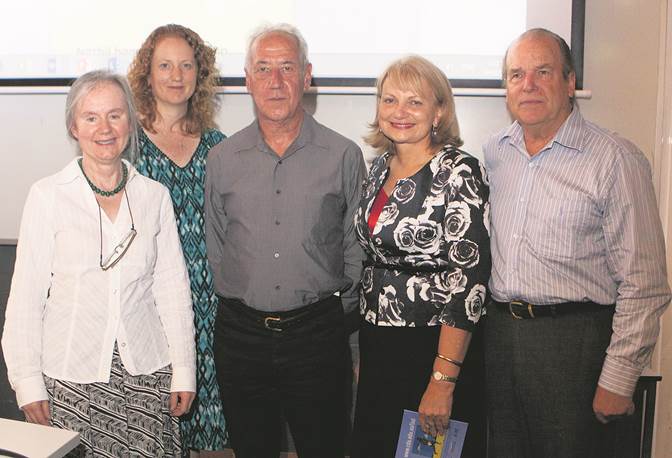Some vital signs for Aboriginal languages
By Michael Christie, Charles Darwin University; Brian Devlin, Charles Darwin University, and Cathy Bow, Charles Darwin University
Attitudes and policies relating to Australian Indigenous languages are in a state of flux. The Northern Territory government is reportedly again aiming to banish Aboriginal languages from the classroom.
But there’s good news too: the Australian Research Council has approved a second round of funding for the Living Archive of Aboriginal Languages, which is being launched today in Darwin.
Building the archive
The Living Archive is a digital collection of materials in Australian Indigenous languages from around the Northern Territory. Most of the current collection was produced by Literature Production Centres at schools with bilingual programs over several decades from 1973.

The resources housed in the Living Archive of Aboriginal Languages include educational materials for children.
Cathy Bow/Living Archive of Australian Languages
The beautifully illustrated books include stories of creation, contact history, traditional practices, cautionary tales, humorous incidents in daily life, environmental knowledge, bush medicine, pedagogical readers, and many other genres. They contain fine examples of people transforming high oral literature into written literature.
With the demise of bilingual education, the books faced an uncertain future. In some cases they had been carefully catalogued and stored in the schools; in others they were carelessly thrown into dusty storerooms. In the worst cases, boxes of books had already been destroyed.
Visits to the communities by project staff involved sorting through piles of dusty books, identifying the best copies for scanning, and talking with community members about the project.

The Living Archive of Aboriginal Languages is a resource that will help all Australians better understand our linguistic heritage.
Living Archive of Aboriginal Languages
Each contributor (author, illustrator, translator, etc) named in a book was sought out (or family members of those who had passed away) and invited to give permission for their materials to be digitised and uploaded to a public website. Most people were pleased to see these resources being valued and given a new life in the digital environment.
The second stage, now underway with additional partners, aims to expand the collection beyond its bilingual education origins to uncover other texts in endangered NT languages, as well as engaging community members, academics and schools in using and enhancing the collection.

The area covered by the archive.
Living Archive of Aboriginal Languages
Designed in part as academic research infrastructure, the Living Archive’s overarching aim is the mobilisation of language work intergenerationally and interculturally. It will reach schools, remote communities, and beyond – and reopen questions about the role of Australian languages in our wider collective Australian life.
Access to online vernacular language materials is becoming easier – and the Living Archive will be a valuable addition to resources for educators. The Australian Curriculum framework explicitly encourages the use of such materials in educational settings.
In spite of this, the latest report to the NT government recommends an English-only approach in bush schools. This flies in the face of research pointing to the effectiveness of planned and informed use of home language and English in the classroom in developing listening, speaking, reading and writing of both home language and English.
While waiting for the next policy decision, community-level support for vernacular languages in schools continues.
The policies that oppose giving home languages a central place in the education of young speakers look like a reaction to top-down pressure to improve the English literacy and numeracy results of young children in very remote Aboriginal communities on the national testing regime (NAPLAN).
Accelerating the development of these competencies seems to trump the benefits of mother-tongue education every time. But at what cost?
Keeping languages active
The launch of the Living Archive, with its focus on collaborations between researchers and language owners, sheds light on the efforts being undertaken in many places to keep languages alive for future generations.

Shelves of documents from the Yirrkala community in north-east Arnhem land.
Cathy Bow/Charles Darwin University
The archive helps us understand how these languages reflect and produce a uniquely Australian knowledge of our history, our place, our relation to the land, our understanding of environments and seasons, the work for example of fire ecology, and our health in body and spirit. English has not evolved to make and do Australian life in the way Australian languages have.
As more and more obscure texts in endangered languages are identified and uploaded to the archive, people in Australia and beyond can continue to engage with this rich cultural heritage.
Visit the Living Archive of Aboriginal Languages here.
![]()
Michael Christie receives funding from the Australian Research Council.
Dr Brian Devlin works for Charles Darwin University, which is a partner in the Living Archive Project, funded by the Australian Research Council. He is a member of the Future Party (http://futureparty.org.au/) and the National Tertiary Education Union. He occasionally volunteers some of his time to the Friends of Bilingual Learning (http://www.fobl.net.au/), the Australian Human Rights Commission and UNESCO.
Cathy Bow receives funding from the Australian Research Council.
This article was originally published on The Conversation.
Read the original article.

